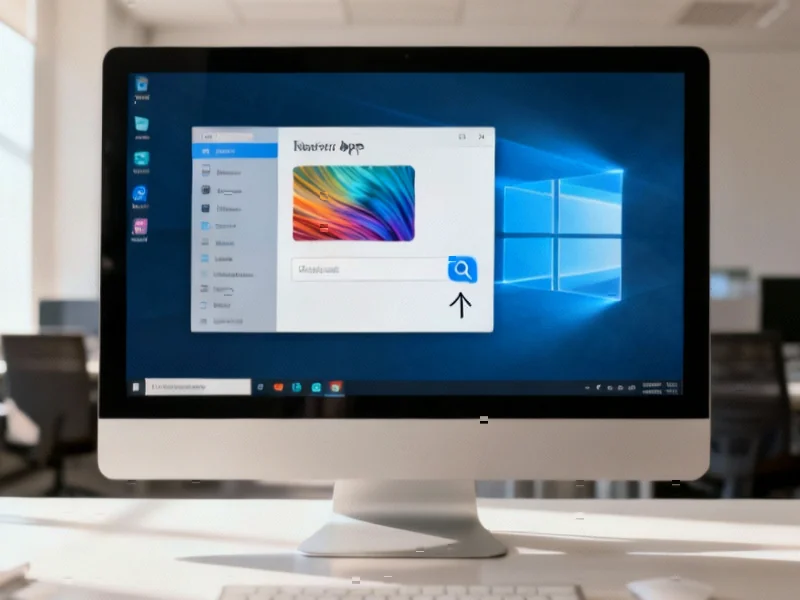According to GeekWire, the University of Washington’s Paul G. Allen School of Computer Science & Engineering unveiled six “Grand Challenges” at its annual Research Showcase and Open House in Seattle on Wednesday. The initiative, led by director Magdalena Balazinska, aims to organize the school’s 90+ faculty members and 2,900 students around solving human-centered problems including privacy protection, mental health accessibility, transparent AI design, and sustainable technology. The school graduated over 600 undergraduates, 150 master’s students, and 50 Ph.D. students last year, with 18 faculty members holding concurrent engagements at companies like Google, Meta, and Microsoft. This strategic refocusing emerged as a bottom-up effort to reconnect specialized subfields that risked becoming isolated “mini departments,” according to professor Shwetak Patel. The approach represents a fundamental shift in how academic computer science tackles real-world problems.
Table of Contents
The Industry-Academia Superpower
What makes UW’s approach particularly noteworthy is their formalized industry partnership model through “concurrent engagements.” While many universities have research partnerships with tech companies, UW has institutionalized this relationship by allowing 18 faculty members to split their time between academia and industry roles. This creates a bidirectional flow of knowledge that’s rare in traditional academic settings. Faculty like Shwetak Patel bring real-time industry challenges back to the classroom while giving students access to the massive computational resources and datasets that are increasingly essential for cutting-edge AI research. However, this model isn’t without trade-offs – as Patel acknowledged, split appointments mean reduced teaching capacity and potential dilution of focus, requiring careful management to ensure academic priorities aren’t compromised.
From Lab to Real World
The showcased projects demonstrate how this industry-academia bridge translates into practical innovations. Projects like DopFone, which transforms smartphones into fetal heart rate monitors using Doppler technology, address the critical challenge of healthcare accessibility in “maternity care deserts.” What’s particularly interesting is how these projects navigate the tension between technological sophistication and practical deployment. VoxServe’s work on efficient speech model serving, detailed in their technical introduction, tackles the fundamental infrastructure challenges that often prevent academic research from scaling to real-world applications. Similarly, ConsumerBench addresses the emerging challenge of running multiple AI models locally on consumer devices – a problem that becomes increasingly relevant as privacy concerns drive more processing to edge devices.
Redefining Computer Science Education
This grand challenges approach represents a significant evolution in how we educate the next generation of computer scientists. The traditional model of teaching fundamental concepts divorced from application is giving way to problem-oriented learning where students like Marquiese Garrett are building CourseSLM chatbots with built-in educational guardrails. This reflects a broader recognition that technical excellence must be coupled with ethical considerations and societal impact. The emphasis on accessibility-first design and transparent AI suggests that UW is preparing students not just to build technology, but to understand its consequences – a crucial skill in an era where AI systems increasingly mediate human experiences.
The Roadblocks Ahead
While the vision is compelling, several challenges loom large. The tension between academic freedom and focused problem-solving could create institutional friction. Specialized research areas might struggle to align with the broad challenge categories, potentially creating a two-tier system within the department. Additionally, the reliance on industry partnerships raises questions about research independence and intellectual property. Projects like ConvFill’s model collaboration approach demonstrate technical innovation, but scaling these solutions requires navigating complex patent landscapes and commercialization hurdles. The school’s success will depend on maintaining the delicate balance between applied problem-solving and fundamental research that drives long-term innovation.
A Model for Academic Computer Science
UW’s approach could signal a broader shift in how elite computer science programs position themselves. As computer science becomes increasingly central to addressing societal challenges, the traditional boundaries between academic research, industry application, and public benefit are blurring. The focus on mental health technology and accessible design reflects growing recognition that technological progress must be measured by human impact rather than just technical metrics. If successful, this model could influence how other institutions like Stanford, MIT, and Carnegie Mellon structure their research priorities and industry relationships, potentially reshaping the entire ecosystem of academic computer science toward more intentional, human-centered innovation.



